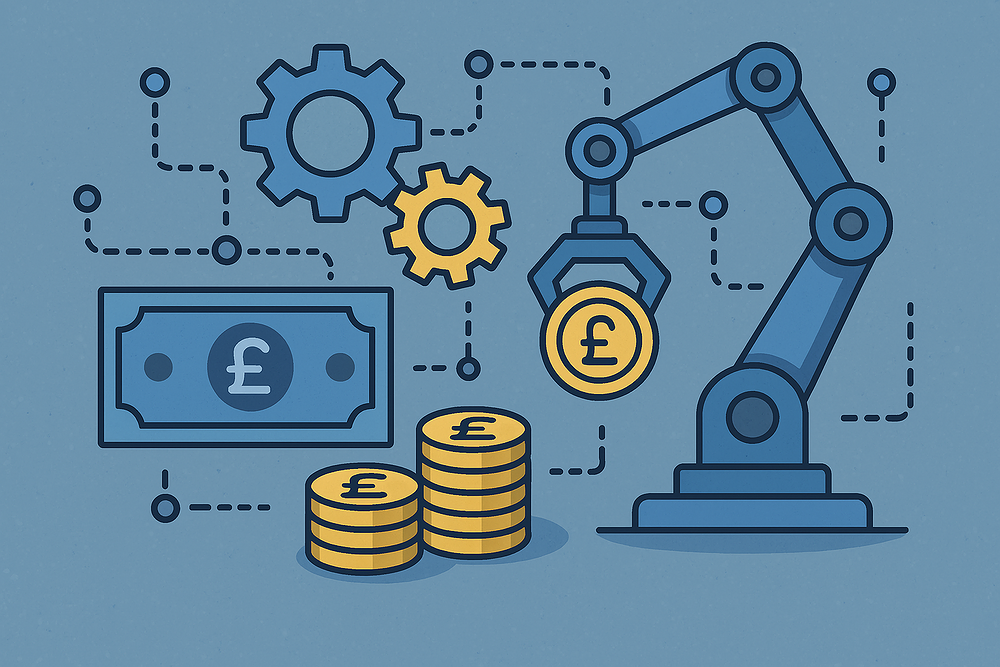Measuring Success: Key Performance Indicators for Your Automation Investment

In today's competitive business landscape, automation has moved from being a luxury to a necessity. Businesses across the UK are rapidly adopting automation solutions to streamline operations, reduce costs, and improve customer experiences. However, implementing automation is just the first step. The real challenge lies in measuring its effectiveness and return on investment.
At AppCoder, we've guided numerous businesses through successful automation journeys. One question we consistently hear is: "How do we know if our automation investment is actually paying off?" This blog post will explore the key performance indicators (KPIs) that can help you measure the success of your automation initiatives, providing you with concrete metrics to evaluate your investment.
Why Measuring Automation Success Matters
Before diving into specific KPIs, let's understand why measuring automation success is crucial:
Justifying investment: Business automation requires an initial investment of time and resources. Proper measurement helps justify this expenditure to stakeholders.
Continuous improvement: By tracking performance metrics, you can identify areas where your automation solution might need refinement.
Strategic planning: Understanding the impact of current automation initiatives helps inform decisions about future technology investments.
Competitive advantage: Measuring success allows you to quantify your edge over competitors who may not be leveraging automation effectively.
Essential KPIs for Measuring Automation Success
Here are the most important KPIs to consider when evaluating your automation investment:
1. Time Savings
One of the most immediate benefits of automation is time savings. Measure this by:
- Process completion time: Compare how long it takes to complete a process before and after automation.
- Staff hours saved: Calculate the number of work hours freed up by automating routine tasks.
- Time-to-market reduction: For businesses developing products, track how automation affects your launch timeline.
A regional accounting firm we worked with found that automating their client onboarding process reduced the time from initial contact to service commencement by 68%, allowing them to take on more clients without hiring additional staff.
2. Cost Reduction
Automation should ultimately lead to cost savings through various channels:
- Direct labour costs: Measure the reduction in overtime or temporary staffing needs.
- Error-related costs: Track the decrease in expenses related to fixing human errors.
- Operational costs: Monitor reductions in paper usage, storage needs, or other physical resources.
A manufacturing client of ours implemented process automation that resulted in a 23% reduction in overall operational costs within the first year, significantly exceeding their initial expectations.
3. Productivity Improvements
Automation should enable your team to accomplish more with the same resources:
- Output per employee: Measure the increase in work completed per staff member.
- Throughput: Track the total volume of work your team can handle before and after automation.
- Capacity utilisation: Monitor how effectively you're using your available resources.
One of our retail clients found that after implementing inventory management automation, each warehouse employee could process 40% more orders per shift without an increase in errors or stress levels.
4. Error Reduction
Human errors can be costly in terms of both money and reputation. Automation typically reduces these errors:
- Error rate: Compare the percentage of errors before and after automation.
- Rework time: Measure the hours spent correcting mistakes.
- Compliance incidents: Track any reduction in compliance violations or penalties.
A healthcare services provider we worked with reduced prescription processing errors by 94% after implementing our automated verification system, significantly improving patient safety.
5. Customer Experience Metrics
Automation often has a direct impact on how customers perceive your business:
- Customer satisfaction scores: Conduct surveys before and after automation implementation.
- Response time: Measure how quickly your team can address customer inquiries or issues.
- First-contact resolution rate: Track the percentage of customer issues resolved in the first interaction.
After automating their customer service workflows, a telecommunications client saw their customer satisfaction scores improve by 27% within just three months.
6. Employee Satisfaction
While often overlooked, employee satisfaction is a crucial metric for automation success:
- Employee satisfaction surveys: Measure how staff feel about their work before and after automation.
- Staff turnover rate: Track any changes in employee retention.
- Internal promotion rate: Monitor whether automation allows more time for skill development and career advancement.
Our financial services client reported a 32% increase in employee satisfaction after automating data entry tasks, allowing staff to focus on more challenging and rewarding aspects of their roles.
7. Return on Investment (ROI)
Perhaps the most comprehensive metric is the direct financial return:
- Payback period: Calculate how long it takes for cost savings to equal the initial investment.
- Net present value (NPV): Determine the current value of all future benefits minus costs.
- ROI percentage: Measure the ratio of net benefits to costs, expressed as a percentage.
A logistics company we partnered with achieved a complete return on their automation investment within just 9 months, far sooner than their projected 18-month payback period.
Implementing a Measurement Framework
To effectively track these KPIs:
- Establish baselines: Measure current performance before implementing automation.
- Set clear targets: Define specific, achievable goals for each KPI.
- Use appropriate tools: Invest in analytics software that can accurately track your chosen metrics.
- Schedule regular reviews: Set up quarterly assessments to evaluate progress and make adjustments.
- Involve all stakeholders: Ensure that everyone from frontline staff to executive leadership understands and contributes to the measurement process.
Common Pitfalls to Avoid
When measuring automation success, be mindful of these common mistakes:
- Focusing solely on financial metrics: While ROI is important, don't overlook qualitative benefits like improved customer and employee satisfaction.
- Expecting immediate results: Some benefits of automation take time to materialise fully.
- Neglecting to update baselines: As your business grows, your pre-automation baseline may need adjustment for fair comparison.
- Failing to consider indirect benefits: Automation often creates unexpected positive outcomes that may not be captured by your initial KPIs.
Conclusion
Measuring the success of your automation investment isn't just about justifying past decisions—it's about building a foundation for future innovation. By tracking the right KPIs, you gain valuable insights that can guide your ongoing digital transformation journey.
At AppCoder, we don't just implement automation solutions; we partner with you to ensure they deliver measurable value to your business. Our experienced team can help you develop a customised measurement framework that aligns with your specific business goals.
Ready to take the next step in your automation journey? Contact our team today to learn how we can help you not only implement effective automation solutions but also measure and maximise their impact on your business.
AppCoder specialises in AI Integration, Business Automation, Cloud Computing, Custom Software, Mobile Apps, Web Apps, and Website Design for businesses across the UK. Visit our website to learn more about how we can help transform your business through technology.
Talk to us about your next project
Our team of experts is ready to help bring your ideas to life with solutions tailored to your business.
Get in Touch

